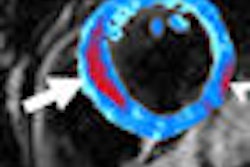Dear AuntMinnie Member,
Given the unbridled energy of children and adolescents, mild traumatic brain injuries and concussions are all too common among this kinetic population.
When it comes to these types of head injuries, researchers at Nationwide Children's Hospital in Columbus, OH, have found with the help of MRI that all concussions are not the same, and how caregivers approach treatment could lead to long-lasting symptoms in weeks, months, and, potentially, years to come.
The study, published in the journal Pediatrics, found that one out of every four children experienced significant postconcussive symptoms, according to an article in our MRI Digital Community.
The researchers also noted that MRI abnormalities were among several indicators that help identify youngsters who are at risk for postconcussive symptoms. The findings reinforce the need to classify concussions based on their severity as either high- or low-risk, so these patients can receive better treatment.
Click here to learn more about the study and MRI's contribution to evaluating traumatic brain injuries.
Joint Commission on MRI safety
Also featured today in the community, MRI architectural consultant Tobias Gilk reports on the Joint Commission's Environment of Care standards for MRI safety.
Among the objectives is to combat the physical environment risks present near an MRI scanner or during MR imaging. The targets include extreme magnetic attraction, negative interaction with medical devices, radiofrequency heating, and dangerous sound pressure levels.
The commission's patient management goal also has environmental safety implications when considered with the screening of code responders and resuscitation equipment.
Read about the commission's plans and see what's in store for MRI operators by clicking here, or visit the MRI Digital Community at mri.auntminnie.com.


.fFmgij6Hin.png?auto=compress%2Cformat&fit=crop&h=100&q=70&w=100)





.fFmgij6Hin.png?auto=compress%2Cformat&fit=crop&h=167&q=70&w=250)











